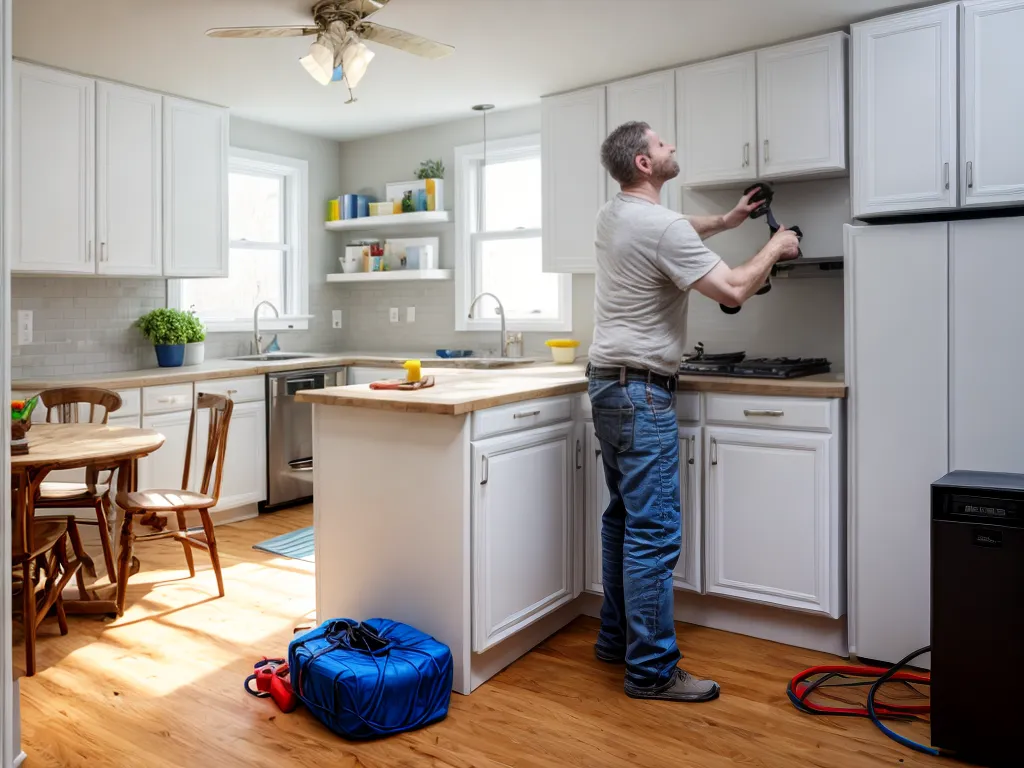
How to Rewire Your Home Without Professional Help
Assess Your Electrical Needs
Before I attempt any electrical work, I first take stock of my home's electrical system and identify any problem areas or upgrades I want to make. I check which rooms need more outlets, where the wiring is outdated or insufficient, and what new demands I'll be placing on my electrical system (like adding major appliances or electric vehicle charging). This helps me prioritize and plan my rewiring projects.
Learn Electrical Basics and Safety
Electricity can be dangerous, so I make sure to educate myself before working on my home's electrical system. I study up on electrical terminology, current Code requirements, and safety best practices. Helpful resources include books, online tutorials, and local adult education classes. I also invest in quality PPE like insulated gloves, eye protection, sturdy shoes, and flame-resistant clothes. Understanding circuits, voltage, amperage, and grounding helps me work safely.
Turn Off Power and Inspect Wiring
Before modifying any wiring, I always shut off power to the affected circuit at the main breaker panel. I verify power is off by testing outlets with a multimeter or voltage tester. Once the circuit is safely dead, I remove outlet and switch covers to expose the existing wires. I check their gauge, connections, insulation condition, and compliance with electrical Code. This informs my rewiring plan. I also map the circuit layout so I can replicate proper load balancing later.
Purchase Supplies
Rewiring requires having the right supplies on hand. I make sure to buy enough NM-B cable in the appropriate wire gauge, new breakers, enough receptacles and switches, wire connectors, electrical boxes, conduit, cable clamps, a fish tape, cable ripper, flush cutters, a multimeter, and other fundamentals. I also pick up extra safety gear like a non-contact voltage tester. Buying quality electrical supplies from reputable retailers helps my project go smoothly.
Run and Connect New Wires
I start by running new cables between my main panel, any junction boxes, and final fixtures according to my wiring plan. I secure cables with staples or zip ties every few feet through joists and studs. At the outlets, switches, and appliances, I carefully connect my new wires using approved connectors and the right splice technique. I match colored wires consistently throughout my circuit and verify grounding and polarity. Labeling wires helps avoid confusion.
Update Electrical Boxes
If my existing receptacle and switch boxes are too small or crowded for the new wiring, I install larger or deeper boxes to suit my needs. I also make sure to use clamps and grommets to protect wires from sharp metal edges. For a clean finish, I fill any gaps around new boxes with silicone caulk once everything is wired properly. The right boxes keep my wires, splices, and devices neat and accessible.
Cover Splices and Test Circuits
After connecting the new wires to outlets and switches, I make sure splices are safely enclosed in electrical boxes. I avoid loose connections and exposed conductors. I also double-check my work, verifying I maintained the proper hot and neutral polarity and safe grounding throughout. Before I re-energize the circuit, I perform continuity testing using a multimeter. Once live, I test each receptacle and switch on that circuit to confirm proper function.
Inspect and Close Up
As the final step, I visually inspect my new wiring, replacing any staples that missed joists, tightening connections, and arranging wires neatly. I confirm no cables will be pinched or penetrated before screwing switch, receptacle, and cover plates back into place. I also mark my new circuit in the breaker box with tape and a label. Once I determine that everything is safe and working properly, I turn the breaker back on and enjoy the improved electricity in my home!